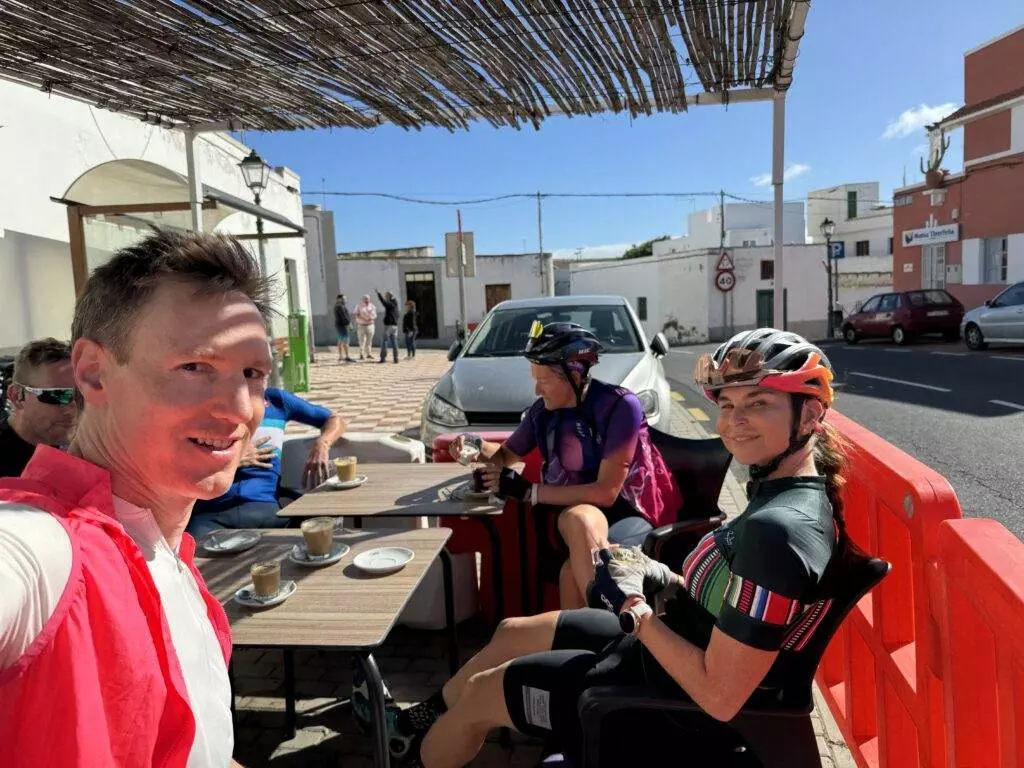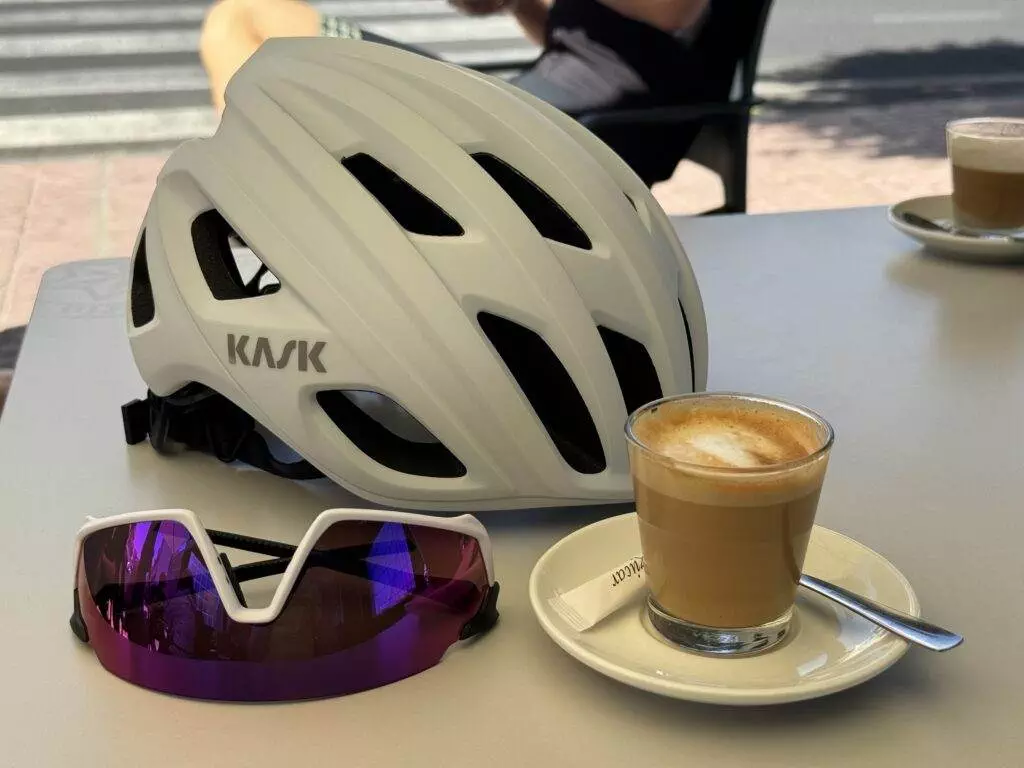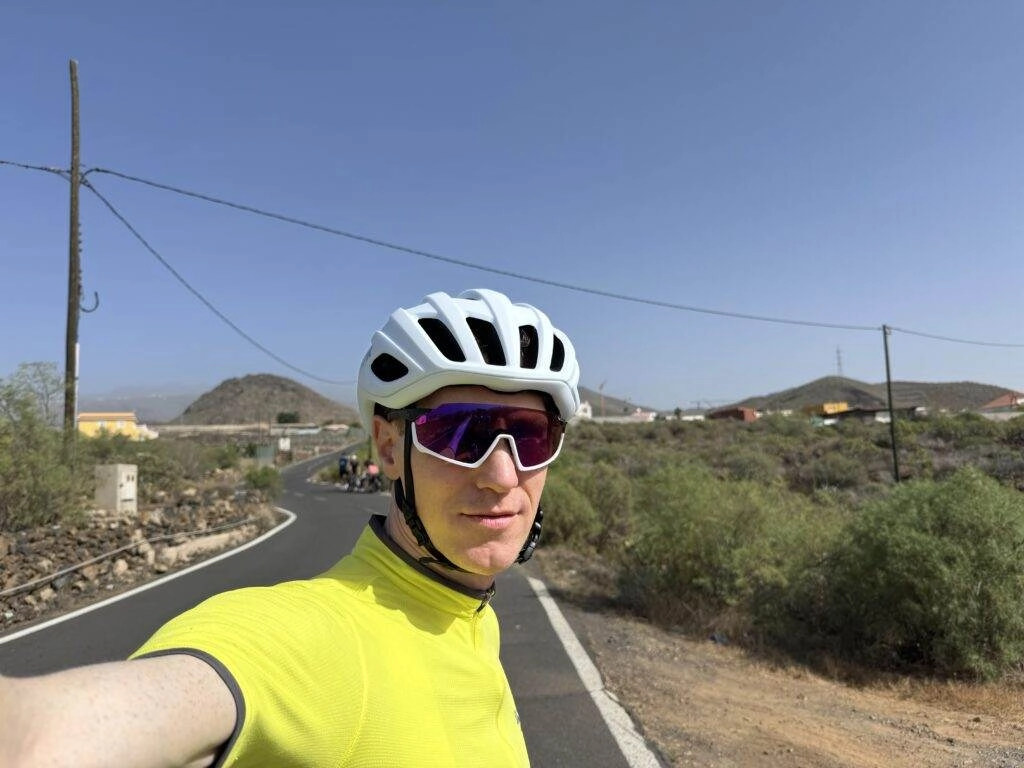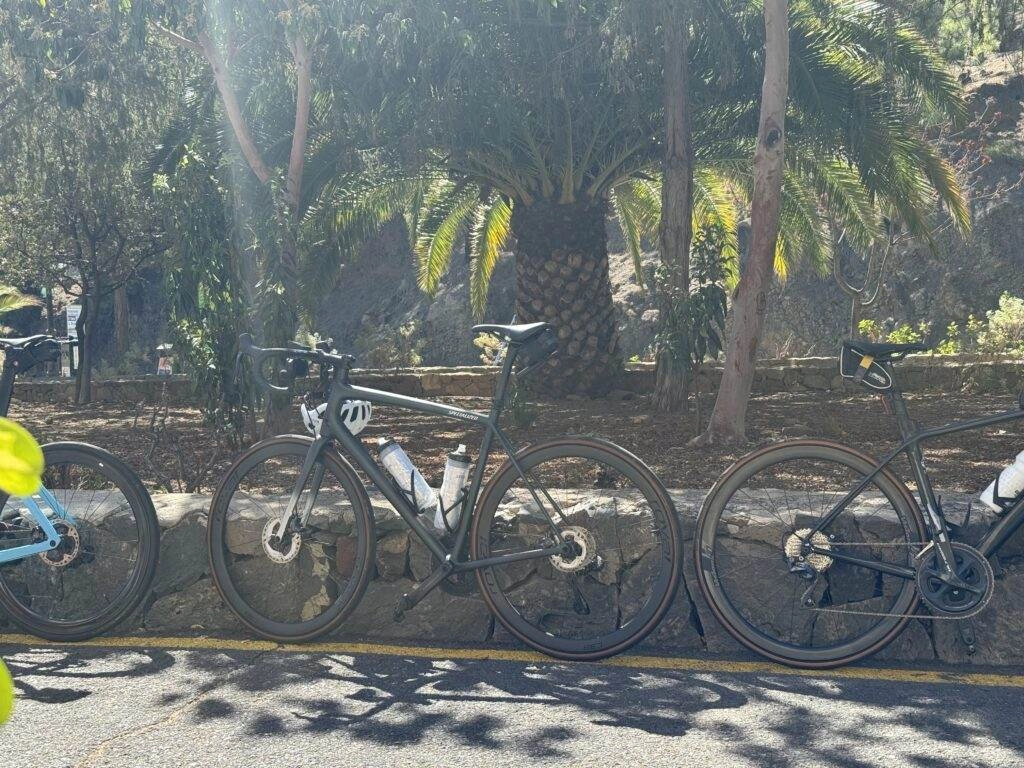Getting to Know Tenerife
The largest island also means the highest number of tourists or travelers.
There’s the developed golden south and the windy dark-coloured north.
Mount Teide sits in-between, at 3715m (the highest elevation of the Atlantic and Spain). It last erupted in 1909.
In the mysterious beliefs of the Guanches – the native inhabitants of the Canaries –, the king of evil, Guayota, lives inside this volcano.
Guayota is said to have trapped Magec (the god of light and the sun) inside the volcano.
The principal god of the Guanches, Achamán, intervened, fought Guayota, released Magec, and trapped Guayota inside the volcano instead.
This story linked to the revering of the sun is encountered in various cultures around the world, highlighting the importance of the warmth and the light.
According to another Guanche story, Mount Teide was in charge of holding up the sky.
Indeed, archaeological digs brought various tools and pottery to light; they were probably used as offerings to the volcano to counter the influence of evil spirits.
Nowadays, all (cycling) routes seem to be going to Teide – as the main attraction and challenge of the island!

Locations to Ride
The north of Tenerife is less crowded and less touristy. You’ll find many coastal climbs, roads leading up to Teide, and iconic rides to Masca and El Palmar villages.
The only thing you miss if you stay in Alcalá or Los Gigantes is the great climb to Vilaflor and beyond, which is better from Los Cristianos and Playa Las Americanas.
Top Guided Cycling Tours Tenerife
General tours
If you wish to have a great variety of tours (even weekly tours) on offer, here’s a useful link.
Training Camps
If you wish to train (especially in winter), Tenerife is great! So, cycling training holidays Tenerife, here we come! There are specialised altitude training camps honed by world-class cycling experts provided.
Search and compare, then decide and go.
Do not worry about the pace of the camp or the possible setbacks (like too-competitive cyclists who’d join you)! Focus on your needs and wishes; everything else will fall into place!
Specialist (solos, self-guided, e-bikes) Cycling Holidays Tenerife
There’s great flexibility in the case of this company (with many benefits) if you book a tour with them. Guided tours are the norm; you can rent e-bikes; tailored tours are the biggest plus.
Where to Stay in Tenerife
As the island isn’t big enough for touring but base riding, the west coast is particularly appealing, offering access to Mount Teide via Vilaflor.
If you stay in Alcalá fishing village or Los Gigantes, you will be closer to some iconic climbs. At the same time, you will avoid the overtourism around Los Cristianos and Playa Las Americanas and the congested coastal road between Playa Las Americanas and Playa San Juan.
You’ll need a place that could ‘host’ your bike, too, especially if you’re travelling with yours. ALCAMAR in Alcalá is your perfect ground-floor flat close to the ocean.
Klaymond Diamond Aparthotel in Los Gigantes offers sea views, a swimming pool where you can relax after a strenuous ride, and some fantastic buffet breakfasts!
On a recent training camp, one of our team stayed in El Medano, a nice little town, but – there’s a reason it’s one of the world’s best windsurfing and kitesurfing locations. The wind that makes it great for water sports made it much less fun for cycling. It was brutal at times. Best to skip El Medano as a base and stay further up the west coast.

Cycling Essentials for Tenerife
When to go? What to bring? How to pay? They’re all covered below—
When to Cycle in Tenerife
Tenerife is a year-round cycling destination. Winter cycling holidays Tenerife as that winter riding option! The optimal time to visit would be outside peak summer months; you’ll still find great weather and less-crowded roads.
Bike Hire in Tenerife
You will need a climbing bike with well-maintained brakes. Given Tenerife’s hilly terrain, most riders will be happy with a compact 50-34 chain set and a cassette up to 34T.
Most bike hire stores are in the tourist-heavy areas of Los Cristianos and Playa Las Americas.
Specific Bike Stores or Chains
You’ll find a Free Motion store in Tenerife, more precisely in Los Cristianos. Probably the best place to get bikes in our experience.
What to Pack
Bring cycling apparel for varying weather and altitude conditions – it can be warm near the coast, but cold by the time you ascend Teide.
Lights are also a must, as you may encounter a few road tunnels and should switch lights on as you go through.
If travelling in winter, be prepared for chillier times of the day/locations; carry at least arm warmers, a waterproof jacket, and long-fingered gloves with you.
If bringing your bike, get it serviced before heading to Tenerife. Also, pack enough spares; take at least a pump, a puncture repair kit, and a multi-tool. And as always, take a spare rear mech hanger – just in case.
How to Pay in Tenerife
Card payments are widely available in Tenerife, but the latest trends involve cash-only businesses to keep cash in circulation.
Gratuities
Not leaving a tip in Tenerife is not considered rude, but 5-10% of the bills in bars and restaurants is the standard.
Tips for Cycling in Tenerife
The legal part:
Wear a helmet (it is mandatory outside urban areas, as well as for cyclists under 16 in all areas) and protective clothing.
Don’t speak on the phone/wear headphones unless you want a fine.
Other common sense tips:
Don’t forget to apply sunscreen, wear sunglasses, and have adequate hydration during your rides.
Take a repair kit along; know the basics of bike maintenance.
Have a mobile phone with you, too; you never know.
Do your lessons well regarding the chosen routes, including stops and essential parts to remember. Ask for local/expert advice if unsure.
Check sunrise and sunset times (this will come in handy, especially in winter), as you need to be more organised and efficient even though a cycling holiday in Tenerife requires a lot of flexibility. Additionally, planning your routes in advance while considering daylight hours can help you maximize your time on the saddle and ensure a safer experience. If you’re dreaming of the ultimate cycling holiday in Lanzarote, you’ll find similar preparation is key, as its volcanic landscape and unique challenges demand just as much attention to timing and efficiency. By staying adaptable and prepared, you’ll get to fully enjoy the breathtaking rides both destinations have to offer. Knowing the daylight hours can help you plan your rides better, ensuring you make the most of your time on the island. Tenerife’s varied terrain and stunning landscapes make it one of the best spots for cycling holidays and top destinations for enthusiasts eager to challenge themselves and enjoy breathtaking views. With proper planning, you’ll strike the perfect balance between adventure and relaxation.
Carry gels and bars.
Best Coffee (Tea) Stops in Tenerife
If you’re around the south (in the end!) and Las Galletas, Tetería Lilies Garden will offer an explosion of colours, flavours, and relaxation.
Pay a visit for drinks at the cash-only The Tea House and Bar in Santiago del Teide.
Scrumptious desserts await at The Fat Ladies at Café Sandra in Puerto de la Cruz.
Some culinary tips for your Tenerife stay? If you like fish, you’ll find plenty of freshly-caught fish served at coastal restaurants.
Gofio (the flour made from toasted grains) is consumed dry or mixed with water or milk; it can’t get ‘more Tenerife’ than that!
Sample the local wine! Ask for a recommendation and just fill your glass!

Getting to and Around Tenerife
Getting to Tenerife usually happens
By plane
Western Europe is well connected by air to Tenerife; so is Eastern Europe (although the flight times are almost as long as those from North America for one-sixth of the price, though).
By ferry
You can take ferries to/from Fuerteventura, Gran Canaria, Lanzarote, La Gomera, La Palma, and mainland Spain.
By car
A rental car is a good idea because you get to go places. Also, you get to carry your bicycle to far-away starting points, so you manage to explore more (see below).
By bus
TITSA buses can transport you around the island, but their policy regarding bikes can be restrictive.
Cycling Events in Tenerife
Vuelta al Teide is a 175km/95km bike tour organised at the beginning or middle of May. The long route passes through Parque Rural de Teno and Parque Nacional del Teide.
El Teide Challenge takes place in November, with the starting point in Arona. It’s a week of cycling events and racing.****
Beyond Cycling: Other Attractions
For a change of scenery, here are some ideas around the island of Tenerife—
- Playa de las Teresitas is one of the most beautiful beaches of Tenerife (even though it is an artificial white sand one); you can find iconic seafood in San Andrés;
- San Cristóbal de La Laguna was apparently not only the first capital of the island but the first settlement established in the Canary Islands; it is chromatically vibrant, with beautiful buildings;
- Puerto de la Cruz hosts an enchanting botanical garden – Jardin Botanico la Orotava; it is the second-oldest in Spain;
- A stop in Icod de los Vinos is also encouraged for at least two reasons: the eight-hundred-year-old dragon tree and the museum dedicated to Malvasía – a family of white grapes cultivated in the Balearic Islands, the Canary Islands, and Madeira;
- Valle de la Orotava isn’t technically a valley, but the lower part of Mount Teide; you can admire the vineyards and the banana plantations stretching to Mirador de Humboldt, which offers spectacular views of the ‘valley’;
- With Casa de los Balcones and Museo de Artesanía Iberoamericana de Tenerife, La Orotava is an intriguing place to visit, especially if you like colonial architecture;
- The Pyramids of Güímar are six controversial structures with an unknown origin or destination, built from lava stone without using mortar;
- El Roque Cinchado is an emblematic rock formation of Tenerife Island; it is part of a collection of volcanic rocks called Los Roques de García; they can be reached by a 5-hour hiking trail, cable car, buggy ride, or bus tour – you may see Teide violets, daisies and cornflowers on the way;
- The Abandoned Leper Colony of Arico can be a real find for those interested in the abandoned places of the world; there are pieces of furniture still around, mingling with the trash and the graffiti; apparently, this place never hosted a patient.
El Drago Milenario is thought to be at least 500 years old, though many agree that its age is around 800. At 60 feet, it is both the oldest and the largest tree in the Canary Islands.
Dragon trees, with their specific look and shape, are native to the Canary Islands.
Would you also fancy changing the island for a while? The laurel forests and olive trees of La Gomera are only 50 minutes away from Santa Cruz de Tenerife.
It ranks as a favourite for cyclists and hikers, who will find banana and date plantations on the island. La Gomera hosts plants that have disappeared from Africa and Europe millions of years ago. Now those would be interesting to see!
Plus, Columbus is said to have had his final departure from San Sebastián de La Gomera, the island’s capital. As a curiosity, there’s a 4000+-word language used on La Gomera.
It is a whistling language called ‘Silbo’ used to send messages across La Gomera’s peaks and valleys. Its speakers are called ‘Silbadors’. It is a way of speaking any existing language through whistling.
The original inhabitants of the island are thought to have been people from current Mauritania, who spoke a tonal language, which explains the whistles!
El Silbo was included in the local school curriculum in the 1990s to keep it from becoming extinct.

Our Recommended Itinerary
Here are some ideas for your time spent in Tenerife; you can tailor them depending on your location on the island and level of fitness—
A) Los Gigantes → Tamaimo → Santiago del Teide → Mirador del Pino → [technical descent] Masca → Mirador del Pino via the climb of Contador [the most demanding in all of Tenerife] → Los Gigantes;
B) Alcalá → Tamaimo → El Palmar → Teno Alto → Teno → Alcalá;
C) Garachicho → Erjos [which offers the best views at the beginning of the route; it can be used as a descending route if climbing to Erjos from Masca or Tierra del Trigo, a steeper choice];
D) Arico → Charco del Pino → Arico [through volcanic landscape].
How We Did It
A snapshot of our trip to Tenerife
- Flew into TFS (with the bike in a Bike Box Alan)
- Taxi to the hotel Arenas Del Mar in El Medano (don’t stay in El Medano – too windy!)
- Others in the group hired bikes from Free Motion El Medano store
- Daily rides out, up Teide a few times and along the South-East coast
- A few meals out in El Medano
- Packed the bike back in the BBA, flew home!
Key Takeaways
In a nutshell, here’s what you need to know about a cycling holiday in Tenerife—
The roads (good or bad)
Generally good, but they can get crowded around Los Cristianos and Playa Las Americas, even farther north, to Playa San Juan!
Stick to the main roads, as the side streets on the island can often be ridiculously steep and almost impossible to ride!
Food: One thing that’s a must-try
Papas arrugadas with an irresistible mojo rojo sauce – the wrinkled potatoes are the simple signature dish of Tenerife!
Climate: Bring sunscreen or a rain jacket
Both! Depending on the time of the year your holiday takes place, you’ll use one more often. Remember that mountain mists are a given, as you find yourself at high altitudes!
Also, winters can get more rain (November to February, especially during December, but this varies nowadays), contrasting with the hot summers (August sees the highest average temperatures at almost 30⁰C highs and 10 hours of sunshine/day).
One ride: If you could only do one ride, this is THE one
No doubt there are more beautiful routes, but it just has to be the main Teide Strava segment, starting near Los Cristianos and heading up through Vilaflor to the Teide National Park sign; ~33km @ 6.4% average. Allez!

Frequently Asked Questions
Have you thought about these questions but didn’t have the opportunity to ask them?
What is the cost of a cycling holiday in Tenerife?
An independent 7-day/6-night cycling holiday in Tenerife can start from around EUR 500, excluding flights, local transportation, meals, and souvenirs.
Which are the top Tenerife cycling tours?
www.cyclingholidaystenerife.com can organise tours for various levels and number of days, so why don’t you contact them? Whether you’re a seasoned cyclist looking for a challenge or a beginner eager to explore, they can tailor the experience to suit your needs. For those new to the process, their team is happy to provide expert cycling vacation planning tips to ensure you make the most of your trip. With stunning routes and breathtaking views, a cycling holiday in Tenerife promises to be an unforgettable adventure.
How is the cycling experience in Tenerife?
The best rides involve climbing, while flat portions are the exception and not the rule. You should come well ‘equipped’ – you’ll need endurance, plus physical and mental strength to help you complete the long ascents.
If possible, train before your trip to Tenerife.
What makes a cycling holiday in Tenerife special?
The island is also fit – through its landscapes and routes – to the more experienced riders. This is what makes Tenerife cycling holidays stand out. The diverse terrain offers a mix of challenging climbs and thrilling descents, perfect for pushing seasoned riders to their limits. While Tenerife boasts an incredible cycling scene, many enthusiasts also find themselves drawn to cycling holidays in Gran Canaria, which provides equally stunning landscapes and demanding routes. Together, these islands create a paradise for cyclists seeking adventure and unforgettable views.
